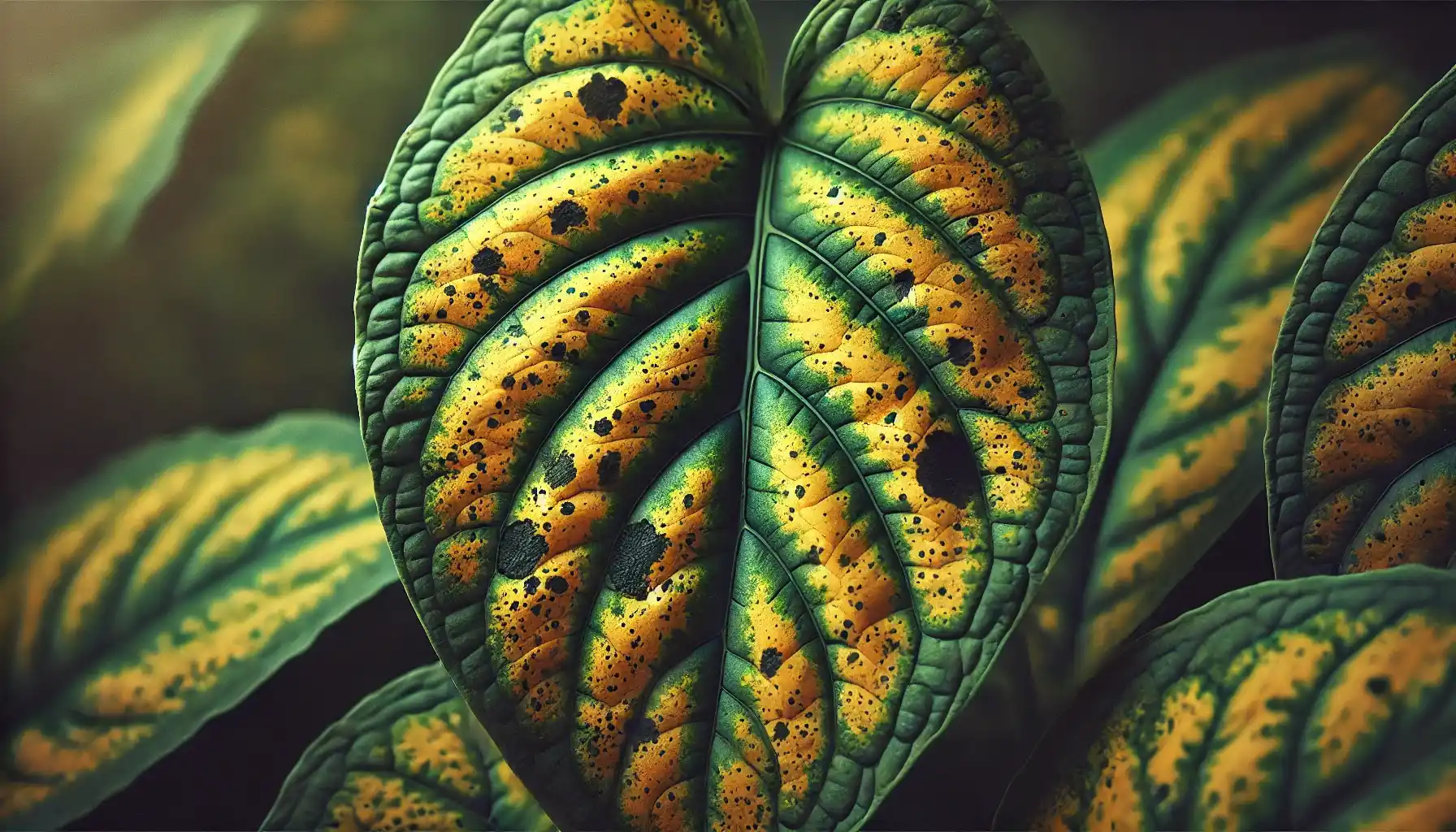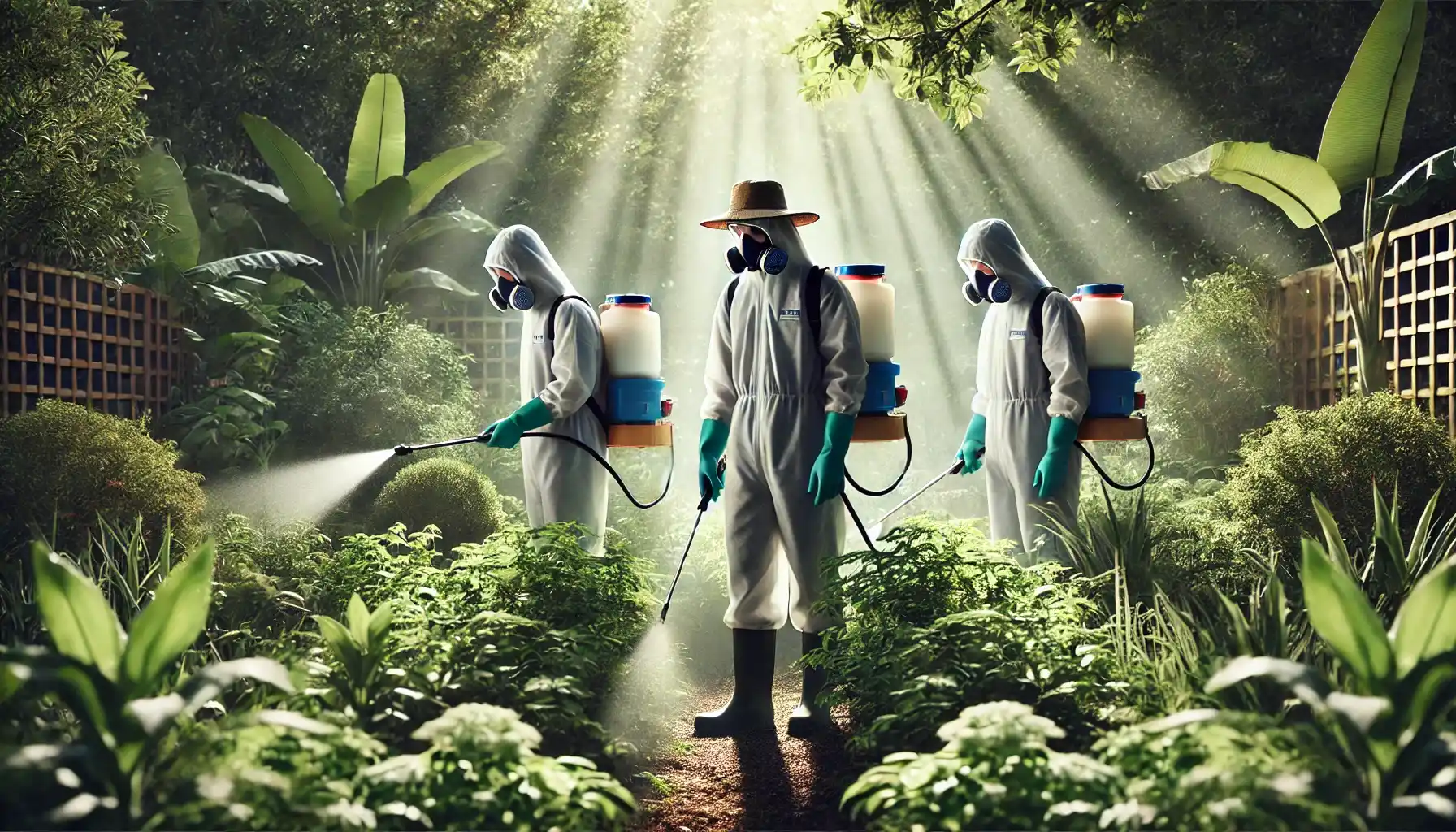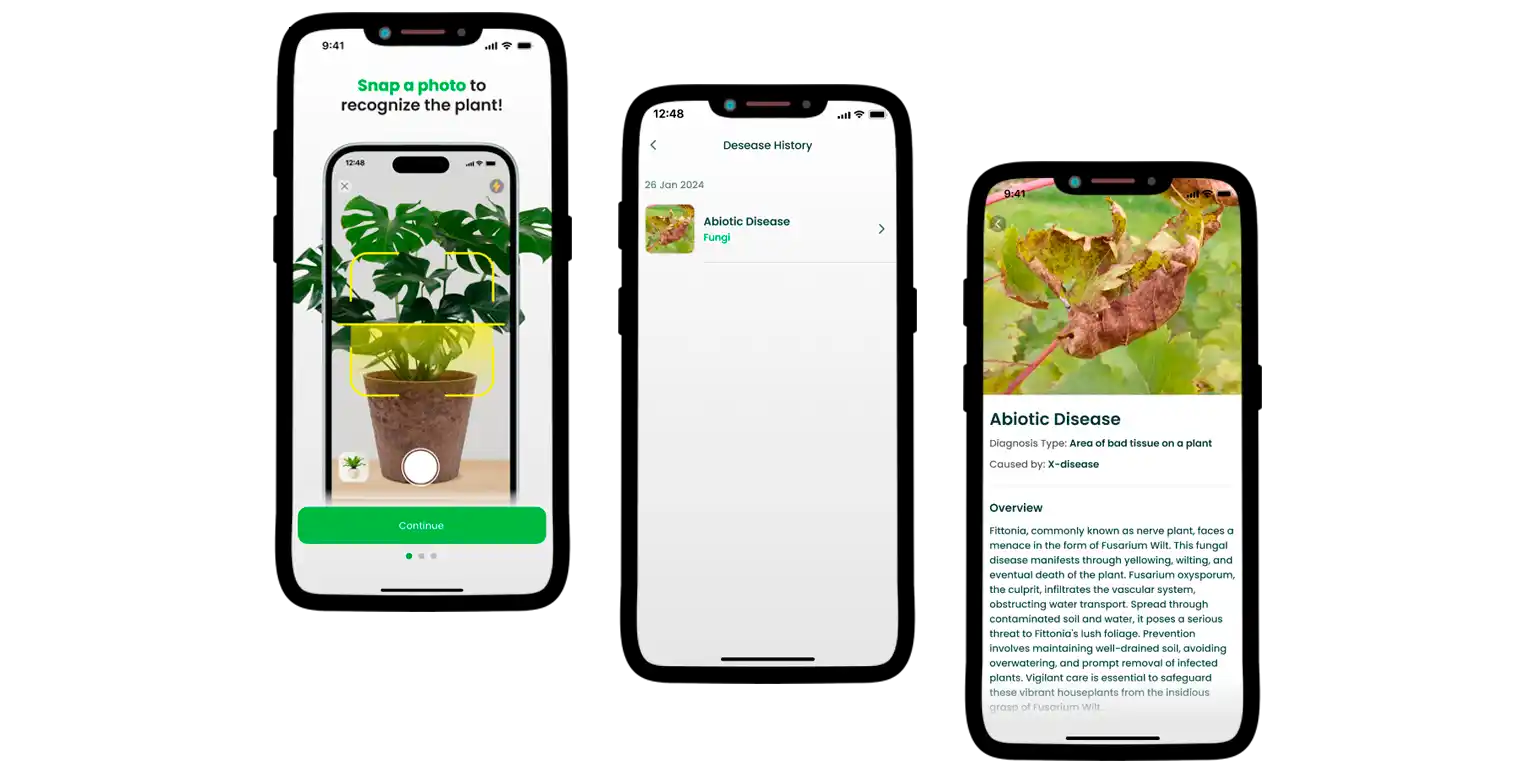
Learn about pest control methods to safeguard your plants. Discover biological, physical, and integrated approaches. Follow safety guidelines for chemical treatments and leverage the power of AI Plant Finder to do it properly.
Contents:
Those who have been engaged in gardening for many years know that plants may suffer from different health issues, and pest infestation is one of the most severe challenges to confront. So as to protect plants from pests and possible pest-related diseases, one should take good care of their plants and expose them to special treatments.
What does pest control mean? How long does pesticide take to dry and what to do before and after this procedure? Explore general rules of pest control treatment and decide whether it is necessary for your garden or not.

What is Pest Control?
In broad terms, pest control is a course of action aimed at preventing or reducing the population of pests, e.g., insects like bed bugs, various animals, and birds, that pose a threat to plants, crops, or even human health. There exist various approaches to managing pests, each having its own benefits and harmful factors as well.
The Most Common Pest Control Methods
Specialists in the industry have developed various pest control methods that are frequently utilized by plant lovers all over the world. As a rule, each type requires thorough preparation and a total understanding of the outcomes and possible complications. Let us explore popular solutions for pest control treatment.
Physical Control: The most straightforward practice that aims to exclude pests from the planting areas may involve handpicking pests, installing barriers, using traps, intended temperature fluctuations, and even drastic measures like field burning as well. Nevertheless, some people find this method inhumane and cruel, so make your choice thoughtfully and with common sense.
Biological Control: Another option to consider presupposes the use of natural pest enemies, i.e., predators, to take control over the pest population within the given area. This type of pest control is considered the most environmentally friendly option, for it involves natural forces only. However, one should remember that disrupting the food chain can impact the natural balance and potentially result in a local catastrophe.
Chemical Control: Nevertheless, what most gardeners opt for is pesticides used to kill or repel pests from their yards. In general, these substances come in different formulations, e.g., sprays, foams, granules, and so on, and may be chosen according to the specific plant needs. Such a method, though, requires strict adherence to guidelines so as not to get poisoned or ruin a garden at all.
Integrated Pest Management: Sustainable gardening is a priority of most plant enthusiasts today, this is why there appeared IPM which combines all the above-mentioned approaches. Thus, the introduction of chemicals is minimized, and the natural balance is not disrupted any more.

All in all, the right choice of pest control treatment should be made by a professional botanist or gardener who may take full responsibility for their actions. For those unsure, there are numerous pest control services available to assist and handle the treatment on your behalf.
How to Determine the Most Suitable Pest Control Method
Although there might be dozens of responses on how to choose the most appropriate pest control method, we recommend that you utilize digital tools to identify the pest, explore the solutions, and consult professionals as well. As a first step, you can install any plant ID application, e.g., AI Plant Finder, and detect the problem with the use of modern technologies.
In order to identify the pest species that causes the problem, one should take a photo of a damaged plant right in the app, so the system may thoroughly analyze the picture, deliver the most relevant information about the issues, and provide possible solutions for your particular case.
By the way, AI Plant Finder offers numerous additional features for gardeners of all levels, namely plant care reminders, a plant encyclopedia with comprehensive details about all ever-known plant species, tips on how to grow and take care of the plants, the light meter, the water calculator, and much more. Do not hesitate to make use of a pocket assistant right now and create a healthy environment for your plants.
With the data collected from the AI Plant Finder, you can always go to the pest control specialists, agricultural extension agents, or entomologists and ask for their services, too.

Steps to Take After Chemical Pest Control Session
Let us imagine that the pest control treatment went well, but what should one do right after the procedure? How long does it take for pesticides to dry? In order to ensure safety and effectiveness, it is essential to take the following steps and stick to the specific rules.
Step 1. Ventilation. (For Indoor Treatment Only).
Ventilate the treated area to dissipate any pesticide particles by opening windows and doors to increase airflow.
Step 2. Stay Away and Wait.
Keep children, pets, and vulnerable relatives away from the area so they do not touch the treated surface. First, the substances used as a pest treatment should dry out, but how long does it take for exterminator spray to dry? As specialists note, it typically takes 2 to 4 hours or more.
Step 3. Clean Surfaces.
After 2 to 4 hours, thoroughly clean the area where the treatment has taken place and pay special attention to the surfaces that people usually come into contact with, i.e., furniture, floor, etc.
Step 4. Dispose of the Waste.
Make sure you dispose of any leftover pesticides according to label instructions or local regulations. Avoid disposing of waste in regular trash or pouring them down drains.
Step 5. Wash Your Clothes.
Clothing worn during pest control should be thoroughly cleaned to remove any pesticide leftovers. The same goes for personal protective equipment.
Step 6. Monitor Efficiency.
The last thing to regularly do is monitor the pest activity in the treated area and check if this or that pesticide has been efficient. This information may be particularly useful for other gardeners or your future experience, too.

Safety First
Pest control treatment usually involves dangerous chemical compounds or non-harmless materials that may have adverse effects on inhabitants. Hence, before proceeding with pest treatment selection and further implementation, it is important to get acquainted with the essential safety rules, irrespective of who is going to do this work, professional pest control services or gardeners themselves.
Make sure you keep children, pets, and their toys far away from the area subject to the treatment.
Utilize certified pesticides only and thoroughly review information about the products.
Read labels carefully and understand the instructions before use.
Wear appropriate personal protective equipment, which is to include gloves, goggles, and masks.
Keep pesticides in the original containers so as not to confuse them with other chemicals or unintentionally harm anyone.
Dispose of pesticide waste as stated in the product’s instructions.
If unsure about proper application or safety precautions, hire a pest control team or consult experts to make an informed decision and keep everyone around healthy.
Warning: if you or your loved ones are experiencing symptoms like nausea, fatigue, weakness, vomiting, headache, eye-watering, diarrhea, or similar conditions, it is crucial to seek immediate medical assistance, for pesticide poisoning and allergies may pose serious health risks.
The health of a garden usually defines the health of its keeper and those who live around it. Taking care of the plants, especially when it comes to pest problems, is a complex process that requires preparation, botany knowledge, and active measures to take. For you not to miss a moment, it is always necessary to think twice and choose pest control methods that both help you get rid of those annoying creatures and promote a healthy garden ecosystem.